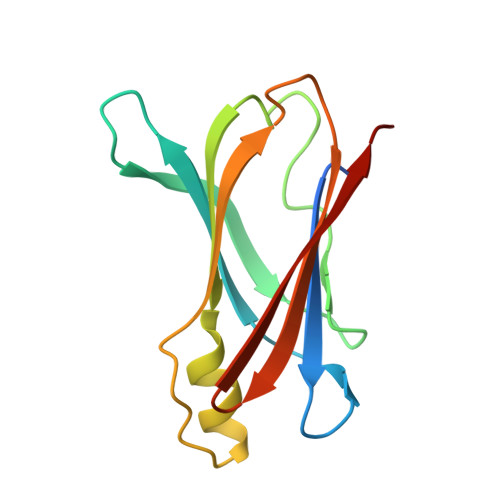Conformational differences between the wild type and V30M mutant transthyretin modulate its binding to genistein: implications to tetramer stability and ligand-binding.
Trivella, D.B., Bleicher, L., Palmieri, L.C., Wiggers, H.J., Montanari, C.A., Kelly, J.W., Lima, L.M., Foguel, D., Polikarpov, I.(2010) J Struct Biol 170: 522-531
- PubMed: 20211733
- DOI: https://doi.org/10.1016/j.jsb.2010.03.002
- Primary Citation of Related Structures:
3KGS, 3KGT, 3KGU - PubMed Abstract:
Transthyretin (TTR) is a tetrameric beta-sheet-rich transporter protein directly involved in human amyloid diseases. It was recently found that the isoflavone genistein (GEN) potently inhibits TTR amyloid fibril formation (Green et al., 2005) and is therefore a promising candidate for TTR amyloidosis treatment. Here we used structural and biophysical approaches to characterize genistein binding to the wild type (TTRwt) and to its most frequent amyloidogenic variant, the V30M mutant. In a dose-dependent manner, genistein elicited considerable increases in both mutant and TTRwt stability as demonstrated by high hydrostatic pressure (HHP) and acid-mediated dissociation/denaturation assays. TTR:GEN crystal complexes and isothermal titration calorimetry (ITC) experiments showed that the binding mechanisms of genistein to the TTRwt and to V30M are different and are dependent on apoTTR structure conformations. Furthermore, we could also identify potential allosteric movements caused by genistein binding to the wild type TTR that explains, at least in part, the frequently observed negatively cooperative process between the two sites of TTRwt when binding ligands. These findings show that TTR mutants may present different ligand recognition and therefore are of value in ligand design for inhibiting TTR amyloidosis.
Organizational Affiliation:
Instituto de Física de São Carlos, Universidade de São Paulo, P.O. Box 369, 13560-970 São Carlos, SP, Brazil.















